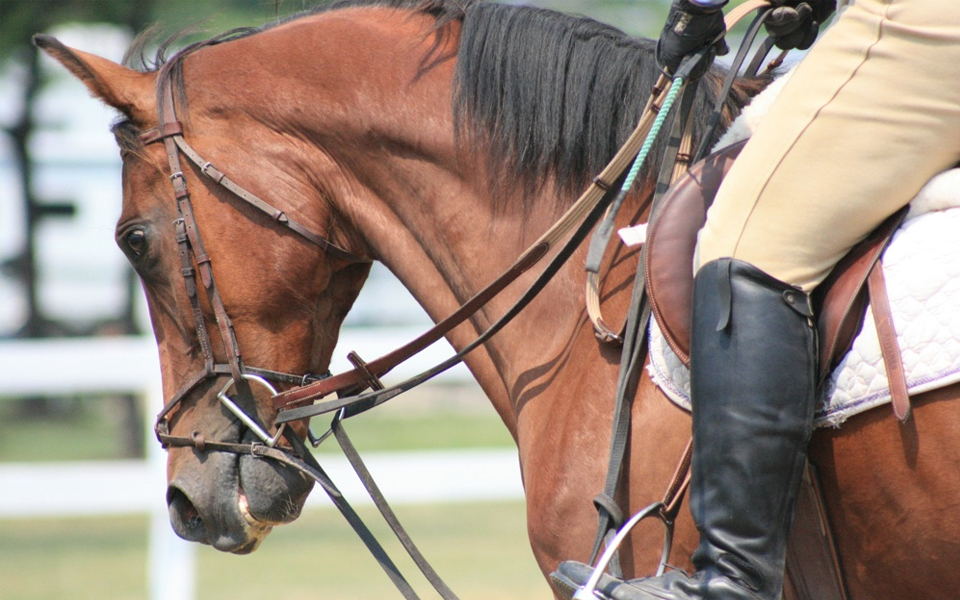Draw reins are one piece of schooling equipment that is most often seen in a wide variety of equestrian disciplines. They are used only for ridden schooling and always with a second rein acting just on the bit; draw reins are never used by themselves. Standard draw reins should be 16 ft long (each rein is 8 ft) and come in several designs. Riders wishing to work-in with them prior to a competition, then remove them quickly before going into the ring, need to use a pattern that comes with separate loops (either a single loop or two loops).
The girth is passed through the loops and the draw reins clip to metal Ds on the loops. This makes it easy to remove them without having to undo the girth. Polo draw reins, which are not removed before play, should have substantial sewn loops that attach directly to the girth because great pressure is brought to bear during play and a clip is a potential weak spot.
Where you position the reins depends on what sort of profile you are trying to achieve. If a very deep head and neck position is sought then the reins need to be attached to the girth and run between the horse’s front legs. If you wish to just tip the horse’s nose in without dropping the head then the reins need to run along the horse’s shoulder and be fastened to the girth under the saddle flap.
Incorrectly used, this device will do more damage than good; it is not enough to just tip the horse’s nose in by force. The idea of draw reins is to ride with a firm seat and good strong leg aids so that the horse is helped to a rounded profile by the draw reins while keeping a good supple contact with the bit and working well from behind.
How To Fit Draw Reins
The reins can either loop around the girth coming up between the horse’s front legs to the bit, passing from the inside to the outside of the bit rings, and up to the rider’s hands, or they can come from the girth, attached just under the rider’s legs, through the bit rings and into the rider’s hands.
The second method of attachment is preferable with a horse who has a tendency to rear or strike with the front feet as there is less likelihood of the feet being caught in the reins; alternatively the draw reins could be passed through a martingale neckstrap. It is important that the reins are passed from the inside to the outside of the bit because passing them from the out side to the inside would put severe pressure on the sides of the horse’s face.

